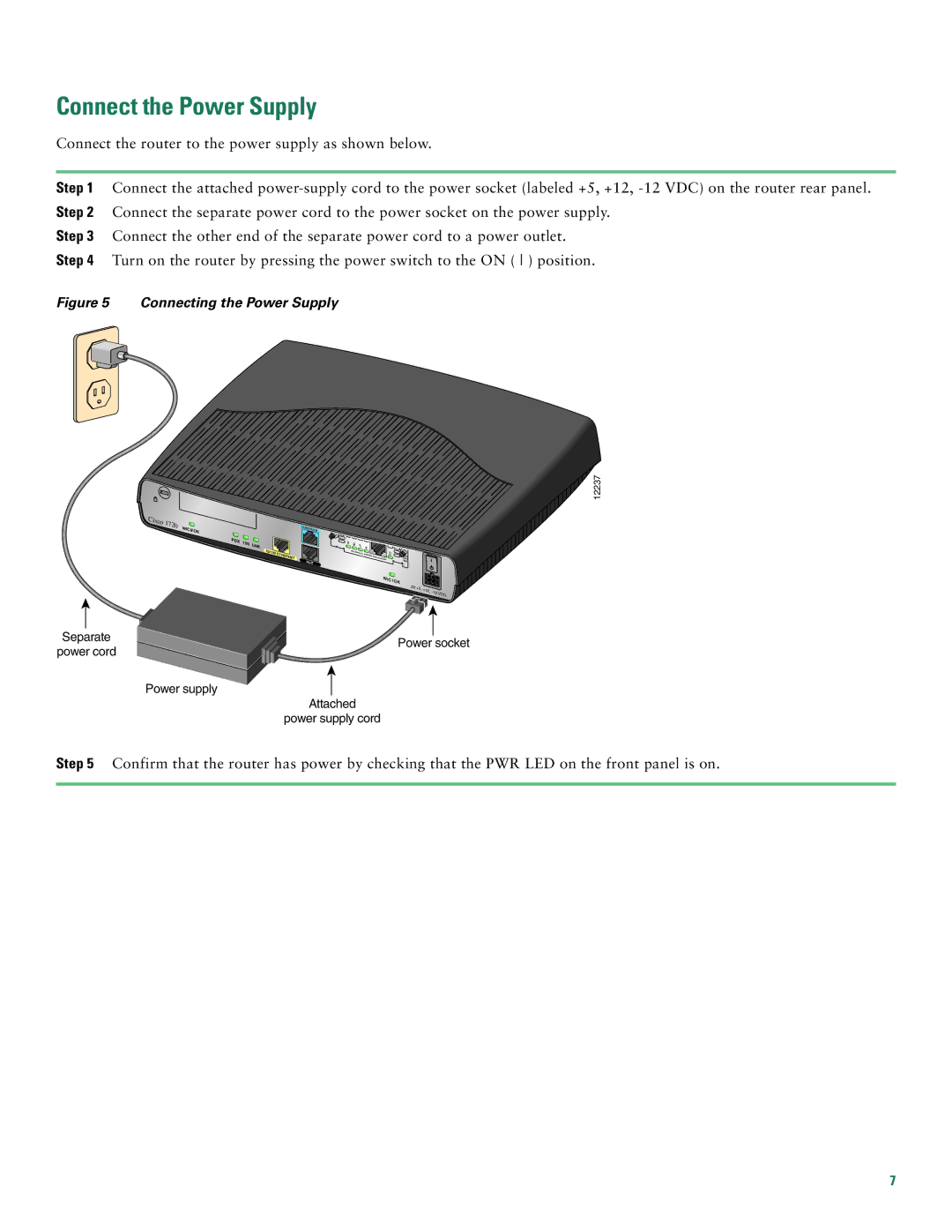1720 specifications
Cisco Systems 1720 is a versatile and reliable router that has been popular in various networking environments since its introduction. Designed primarily for small to medium-sized businesses, the Cisco 1720 is renowned for its compatibility with a range of Cisco's networking technologies, making it an ideal solution for those looking to enhance their network infrastructure.One of the standout features of the Cisco 1720 is its support for direct internet access, which can be achieved through multiple protocols such as Point-to-Point Protocol (PPP) and High-Level Data Link Control (HDLC). This allows businesses to connect seamlessly to the Internet, ensuring that operations can run smoothly and efficiently. Additionally, the router includes integrated multi-protocol routing capabilities, which support various network protocols such as IP, IPX, and AppleTalk. This multifaceted functionality is crucial for companies that operate heterogeneous networks.
Security is another significant aspect of the Cisco 1720. It comes equipped with built-in firewalls and Access Control Lists (ACLs) to manage and restrict unauthorized access to sensitive network resources. This makes it vital for businesses that prioritize data integrity and security in their operations. Furthermore, the router supports Virtual Private Network (VPN) functionality, enabling organizations to establish secure connections for remote workers or branch offices.
The hardware specifications of the Cisco 1720 further enhance its utility. The router can host various types of network interface cards, giving users the flexibility to customize their networking environment. It also features a modular design allowing for easy upgrades and maintenance, which is crucial for adapting to changing business needs and technologies.
Overall, the Cisco Systems 1720 router combines reliability, security, and adaptability, making it an excellent choice for businesses seeking to build robust and efficient networks. Its ability to implement various routing protocols, enforce security measures, and provide scalable options for expansion serves as a foundation for successful connectivity in small to medium-sized organizational settings. The Cisco 1720’s durability and feature set solidify its place as a valuable asset in network infrastructure solutions.

